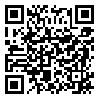Volume 14, Issue 55 (6-2024)
NCMBJ 2024, 14(55): 41-51 |
Back to browse issues page
Download citation:
BibTeX | RIS | EndNote | Medlars | ProCite | Reference Manager | RefWorks
Send citation to:



BibTeX | RIS | EndNote | Medlars | ProCite | Reference Manager | RefWorks
Send citation to:
Ahmadi D, Zargar M, Zolfaghari M R, Kazemimanesh M, Ghaemi A. Comparison of the transfection efficiency of cationic virosome derived from vesicular stomatitis virus and the two commercial transfection reagents in HEK-293 and Vero cell lines. NCMBJ 2024; 14 (55) :41-51
URL: http://ncmbjpiau.ir/article-1-1679-en.html
URL: http://ncmbjpiau.ir/article-1-1679-en.html
Department of Microbiology, Faculty of Basic Science, Qom Branch, Islamic Azad University, Qom, Iran , zargar@qom-iau.ac.ir
Abstract: (1345 Views)
Abstract
Aims and Background: Successful delivery of a gene to a target cell requires the development of a safer and more efficient gene transfer system. This study aimed to evaluate the transfection efficiency of cationic virosome derived from vesicular stomatitis virus (VSV) as a hybrid nano-carrier compared to two commercial transfection reagents including Lipofectamine™ 2000 and, GenJet™ in HEK-293 and, Vero cell lines.
Material and Methods: The transfection efficiency of VSV cationic virosome, Lipofectamine™ 2000, and GenJet™ was evaluated in HEK-293 and Vero cell lines using pEGFP-N1 plasmid transfection, fluorescent microscopy, and flow cytometry methods. Also, the toxicity of cationic virosome and commercial transfection reagents was investigated by the MTT test. The inhibitory effect of NH4Cl on virosome transfection efficiency was analyzed by fluorescent microscopy and flow cytometry.
Results: Our findings showed that the highest level of EGFP expression was obtained in cells transfected with Lipofectamine™ 2000. Transfection efficiency was significantly increased in both cells transfected with virosome/pEGFP-N1 compared to pEGFP-N1/GenJet™ (P< 0.05, P< 0.01). In addition, the results of cell viability analysis by MTT were consistent with the results obtained from the evaluation of transfection efficiency. Cells transfected with lipofectamine™ 2000 showed the highest survival rate. Cell viability was significantly higher in cells transfected with VSV cationic virosomes compared to cells transfected with GenJet™ (P< 0.05). The results showed that transfection was inhibited in HEK-293 cells treated with NH4Cl.
Conclusion: VSV-derived cationic virosome containing VSV-G is an efficient hybrid nanocarrier with broad cellular tropism, which provides new insight into its application as a gene delivery system in gene therapy studies.
Aims and Background: Successful delivery of a gene to a target cell requires the development of a safer and more efficient gene transfer system. This study aimed to evaluate the transfection efficiency of cationic virosome derived from vesicular stomatitis virus (VSV) as a hybrid nano-carrier compared to two commercial transfection reagents including Lipofectamine™ 2000 and, GenJet™ in HEK-293 and, Vero cell lines.
Material and Methods: The transfection efficiency of VSV cationic virosome, Lipofectamine™ 2000, and GenJet™ was evaluated in HEK-293 and Vero cell lines using pEGFP-N1 plasmid transfection, fluorescent microscopy, and flow cytometry methods. Also, the toxicity of cationic virosome and commercial transfection reagents was investigated by the MTT test. The inhibitory effect of NH4Cl on virosome transfection efficiency was analyzed by fluorescent microscopy and flow cytometry.
Results: Our findings showed that the highest level of EGFP expression was obtained in cells transfected with Lipofectamine™ 2000. Transfection efficiency was significantly increased in both cells transfected with virosome/pEGFP-N1 compared to pEGFP-N1/GenJet™ (P< 0.05, P< 0.01). In addition, the results of cell viability analysis by MTT were consistent with the results obtained from the evaluation of transfection efficiency. Cells transfected with lipofectamine™ 2000 showed the highest survival rate. Cell viability was significantly higher in cells transfected with VSV cationic virosomes compared to cells transfected with GenJet™ (P< 0.05). The results showed that transfection was inhibited in HEK-293 cells treated with NH4Cl.
Conclusion: VSV-derived cationic virosome containing VSV-G is an efficient hybrid nanocarrier with broad cellular tropism, which provides new insight into its application as a gene delivery system in gene therapy studies.
Keywords: Virosome, Transfection, Nanocarrier, Vesicular stomatitis virus, Gene therapy, Lipofectamine™ 2000, GenJet™, Iau Science.
Type of Study: Research Article |
Subject:
Physiology
Received: 2024/08/10 | Accepted: 2024/06/30 | Published: 2024/06/30
Received: 2024/08/10 | Accepted: 2024/06/30 | Published: 2024/06/30
Send email to the article author
| Rights and permissions | |
 |
This work is licensed under a Creative Commons Attribution-NonCommercial 4.0 International License. |




